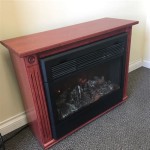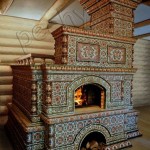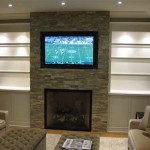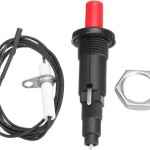Here is an article on Outdoor Fireplace Tile Ideas DIY, adhering to all requirements:
Outdoor Fireplace Tile Ideas: A DIY Guide
An outdoor fireplace serves as a focal point for patios, decks, and backyard spaces, providing warmth and ambiance for gatherings and relaxation. Enhancing its aesthetic appeal through tiling is a popular DIY project that allows homeowners to personalize their outdoor living areas. Selecting the right tile and installation techniques are crucial for ensuring both the visual attractiveness and the long-term durability of the tiled surface, especially when exposed to the elements. This article explores various tile options and DIY approaches to transform an outdoor fireplace into a stunning feature.
Tile Selection Considerations for Outdoor Fireplaces
Choosing the appropriate tile for an outdoor fireplace involves considering several factors, including material properties, aesthetic preferences, and budget. Different tile materials offer varying levels of durability, resistance to temperature fluctuations, and design versatility. Understanding these characteristics is essential for making an informed decision.
Porcelain tiles are a frequently recommended choice due to their high density and low water absorption rate. This makes them highly resistant to freezing and thawing cycles, a critical factor in climates experiencing significant temperature variations. Porcelain tiles are also available in a wide range of styles, colors, and textures, including those that mimic natural stone, brick, or wood, providing ample design flexibility. Their inherent stain resistance further contributes to their suitability for outdoor applications.
Natural stone tiles, such as slate, travertine, and granite, offer a timeless and elegant aesthetic. Each stone type possesses unique characteristics in terms of color variation, texture, and porosity. Slate, known for its durability and natural cleft texture, provides a rustic and earthy feel. Travertine, with its distinctive pitted surface and warm tones, exudes a Mediterranean charm. Granite, renowned for its exceptional hardness and resistance to staining, offers a sophisticated and durable option. However, natural stone tiles typically require sealing to protect against moisture penetration and staining.
Ceramic tiles, while often more budget-friendly than porcelain or natural stone, are generally less durable and more susceptible to moisture damage. They are best suited for outdoor fireplaces in milder climates with minimal exposure to freezing temperatures. When selecting ceramic tiles for outdoor use, it is crucial to ensure they are specifically rated for exterior applications and possess a low water absorption rate. Their design versatility can add a touch of charm to an outdoor setting. Glass tiles, while visually striking, are generally not recommended for fireplace surrounds due to their susceptibility to cracking under extreme temperature changes. However, they can be used in smaller decorative accents if properly installed and sealed. Ultimately, careful consideration of the climate and the specific location of the fireplace is essential to ensure tile durability.
DIY Installation Techniques and Essential Materials
Successful DIY tile installation requires meticulous preparation, the use of appropriate materials, and adherence to proper techniques. Before commencing the project, it is essential to thoroughly clean the fireplace surface and ensure it is level and free of any loose debris. Applying a cement backer board over the existing fireplace structure provides a stable and moisture-resistant substrate for the tile installation.
The choice of mortar is critical for achieving a strong and durable bond between the tiles and the substrate. Modified thin-set mortar, specifically formulated for outdoor use, is highly recommended due to its enhanced adhesion and flexibility, which helps to accommodate thermal expansion and contraction. When mixing the mortar, it is vital to follow the manufacturer's instructions carefully to achieve the correct consistency.
Applying the mortar evenly with a notched trowel is essential for ensuring proper tile adhesion. The size of the trowel notch should be selected based on the tile size and the manufacturer's recommendations. Back-buttering each tile with a thin layer of mortar before setting it in place further enhances adhesion. Maintaining consistent spacing between the tiles using tile spacers is crucial for achieving a uniform and professional-looking grout line. After allowing the mortar to cure for the recommended period, typically 24 to 48 hours, grout can be applied. Selecting a grout that is specifically formulated for outdoor use, and that is resistant to staining and mildew, is paramount. After the grout has cured, sealing the grout lines will further protect against moisture penetration and staining.
Essential tools for this DIY project include a tile saw for cutting tiles to size, a notched trowel for applying mortar, tile spacers for maintaining uniform spacing, a rubber grout float for applying grout, a grout sponge for cleaning excess grout, and safety glasses and gloves for protection. Accurate measurements and precise cutting are crucial for achieving a professional-looking finish. Working in small sections and periodically checking for levelness ensures a consistent and aesthetically pleasing result.
Design Ideas and Aesthetic Considerations
The aesthetic possibilities for tiling an outdoor fireplace are vast, allowing homeowners to customize the design to complement their existing outdoor décor and personal preferences. Creating a focal point that harmonizes with the surrounding landscape and architectural style enhances the overall visual appeal of the outdoor space.
Consider the surrounding environment and existing hardscaping when selecting tile styles and colors. If the surrounding patio or deck features natural stone elements, choosing tiles that complement those materials can create a cohesive and harmonious look. Conversely, introducing contrasting colors or textures can add visual interest and create a striking focal point. Using larger format tiles can create a more modern and streamlined aesthetic, while smaller mosaic tiles can add intricate detail and visual texture. The color of the grout can also significantly impact the overall aesthetic. A contrasting grout color can accentuate the tile pattern, while a matching grout color can create a more seamless and unified look.
Incorporating decorative accents, such as mosaic borders or accent tiles, can further enhance the visual appeal of the fireplace surround. These accents can be used to highlight specific architectural features or to introduce pops of color and visual interest. Using different tile patterns, such as herringbone or subway tile, can add a unique and personalized touch. Ultimately, the design should reflect the homeowner's individual style and create a welcoming and inviting atmosphere for the outdoor space. Paying attention to detail, from the tile selection to the grout color and the placement of decorative accents, will contribute to a stunning and long-lasting outdoor fireplace design. The chosen design should also complement the overall style of the home and yard, whether it's rustic, modern, or traditional, to create a cohesive and aesthetically pleasing outdoor living space.

Outdoor Fireplace Ideas 9 Designs For Your Backyard

Outdoor Fireplace Ideas 9 Designs For Your Backyard

30 Outdoor Fireplace Ideas For A Cozy Backyard

Outdoor Fireplace Ideas The Home Depot

45 Beautiful Outdoor Fireplace Ideas Install It Direct

Outdoor Fireplace Ideas The Home Depot

Creative Outdoor Fireplace Designs And Ideas

45 Beautiful Outdoor Fireplace Ideas Install It Direct

Outdoor Fireplace Diy Should You Even Consider It Dallas Kitchens

These 10 Firepit Seating Ideas Will Make Your Outdoor Space Cozy








